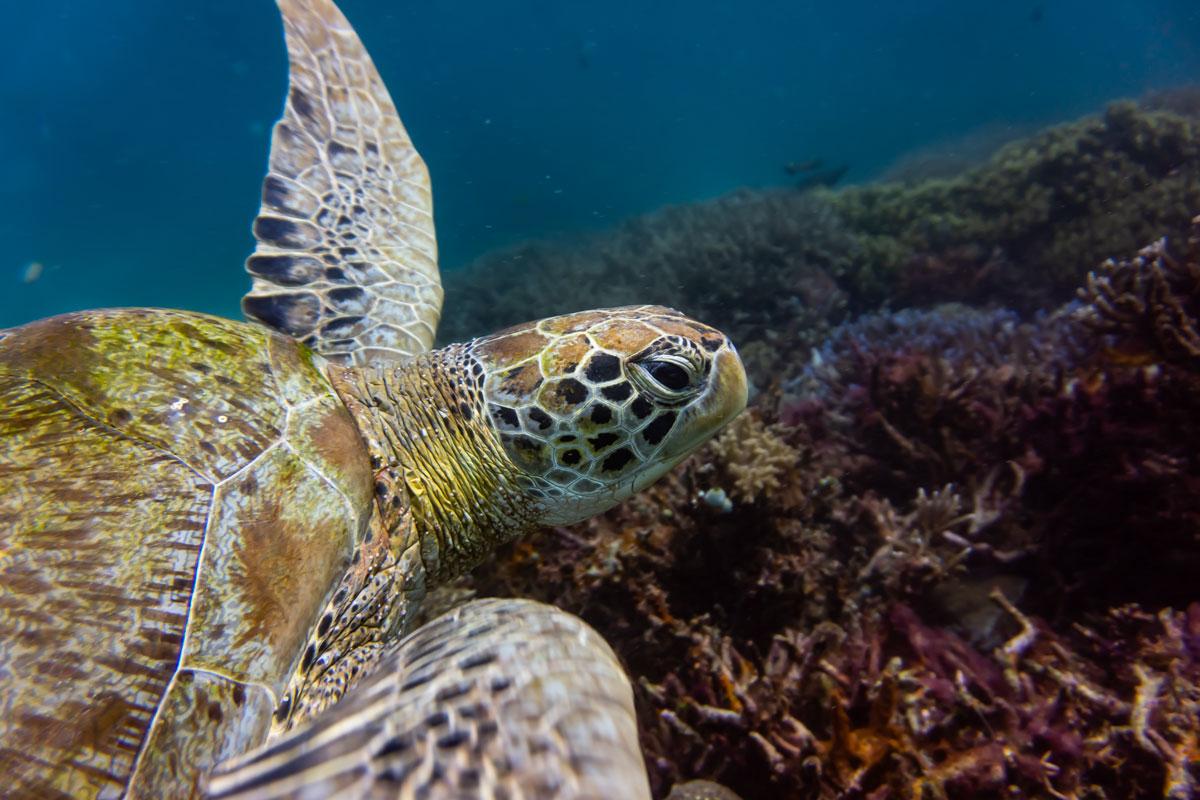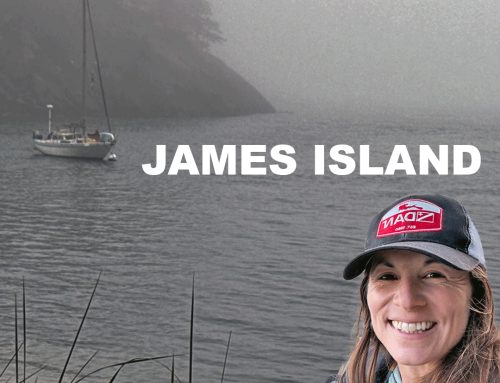Often the most common questions we receive when someone comes to dive with us is: “will we see turtles?” The answer is simple; We can never guarantee 100% that we will see them but there is usually a good possibility since they are residents of the waters of the Komodo National Park, Indonesia. Many people are curious about these reptile species and wish to see them in their natural habitat.
Sea turtles and their habitat
Sea turtles are a fundamental link within marine ecosystems. They help maintain the health of seagrass beds and coral reefs. They do this by feeding on sponges thus avoiding a massive proliferation of them that would affect the coral ecosystems. Sea turtles also graze on the seagrass beds (keeping them trimmed and healthy ) or feed on jellyfish (which feed on fish larvae).
Sea turtles, in general, prefer tropical or subtropical habitats, although it is possible to find them in colder waters. Its life cycle begins at birth, leaving the eggs deposited in the sand on beaches. When the small turtles hatch, they have to overcome many obstacles to survive due to their size they are very vulnerable to predators. This means that in each nest, the momma turtles deposit between 100-150 eggs in order to give many chances for some in that batch to survive. After their first contact with the water, they go offshore where they can spend up to 10 years until they return to coastal waters (once they have grown). Once they reach sexual maturity, they will return to their place of birth for reproduction and ensure the survival of the species.

Species of Sea Turtles
There are 7 species of marine turtles distributed in two large families:
- Cheloniidae: Characterized by a carapace with scales, which vary in shape and size depending on the species.
- Dermochelyidae: its shell is flexible and thin, similar to leather, hence its denomination of “soft turtles” (remember that we do not touch any animal or underwater organism).
The 7 species of turtles are:
- Chelonia mydas – Green Turtle
- Eretmochelys imbricata – Hawksbill Turtle
- Caretta caretta – Loggerhead Turtle
- Dermochelys coriacea – Leatherback Turtle
- Lepidochelys olivacea – Olive Turtle
- Lepidochelys kempii – Bastard Turtle
- Natator depressus – Flat turtle
Sea Turtles in Komodo, Indonesia
Thanks to the richness of the waters of the Komodo National Park, we can enjoy a population of resident turtles at several different dive sites including Siaba Besar, Batu Bolong, Tatawa Besar, Pengah, Siaba Kecil, and North of Komodo.
The species that predominate in these waters are the green turtle and the hawksbill turtle. Siaba Besar is an exceptional dive site where we can enjoy seeing green turtles resting on the seabed, feeding or swimming to the surface to breathe.
The hawksbill turtle, smaller than the green one, is a sucker for sponges and it is common to find it feeding on these parts of the coral reef all around the park.
Threats to sea turtles
Like any marine ecosystem or species, there are some threats that directly affect sea turtles in Indonesia.
- Poaching and direct consumption: In some places, turtle eggs are consumed and represent one of the main causes of the reduction of the turtle population worldwide.
- Accidental fishing: Every year thousands of turtles get caught in the fishing gear and die due to the inability to return to the surface to breathe.
- Illegal trade: The high demand and the high price derived from the products made from the shells of turtles (especially hawksbills and leatherback turtles) make their populations vulnerable.
- Climate change: Climate and climate changes can have a great impact on the turtle population. Bear in mind that the sex of the small turtles depends exclusively on the incubation temperature of the eggs. Changes in the global temperature will create changes in the temperature of the sand where the eggs are incubated, producing imbalance and instability in the balance of turtle populations.
- Garbage and pollution: Due to the huge amounts of garbage accumulated in the oceans, turtles confuse garbage and plastics with their food (jellyfish) causing them to die when they ingest them. Getting entangled in fishing nets, gear and other types of garbage that float prevents turtles from swimming, breathing or feeding naturally.
- Loss of natural habitats: the urbanization of natural nesting areas, as well as the destruction of coastal feeding areas, means that populations are threatened.
See you in Komodo
Join us in Komodo to see sea turtles on your next dive!
Hope to see you here soon!
Sergio Palazuelos
MSDT #345513
Azul Unlimited
We teach responsible scuba divers and ocean protectors. The brand is run by PADI IDC Staff Instructor Sarah Valdez who teaches scuba diving in person and on YouTube. Now she travels around the states and Mexico in her van scuba diving in new and different places. Follow her adventures on YouTube, Instagram, Facebook, and TikTok or join the Azul scuba community on Patreon.
Azul Unlimited is partnered with Azul Komodo, a top PADI IDC Center in Labuan Bajo, Indonesia offering daily dive trips to the Komodo National Park. Contact their team directly for an unforgettable experience diving in one of the top dive destinations in the world!









